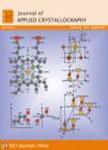版权所有:内蒙古大学图书馆 技术提供:维普资讯• 智图
内蒙古自治区呼和浩特市赛罕区大学西街235号 邮编: 010021

作者机构:Univ Bielsko Biala Bielsko Biala Poland
出 版 物:《JOURNAL OF APPLIED CRYSTALLOGRAPHY》 (应用结晶学杂志)
年 卷 期:2013年第46卷第4期
页 面:1136-1144页
核心收录:
学科分类:07[理学] 070205[理学-凝聚态物理] 08[工学] 080501[工学-材料物理与化学] 0805[工学-材料科学与工程(可授工学、理学学位)] 0703[理学-化学] 0702[理学-物理学]
主 题:immune algorithms genetic algorithms deconvolution starting parameters diffraction curves
摘 要:This paper describes how a combination of two methods of artificial intelligence, an immune algorithm and a genetic algorithm, can be used to recognize a polymer by the shape of its X-ray diffraction curve. To this end, the hybrid algorithm uses a database which contains theoretical functions describing wide-angle X-ray diffraction curves of different polymers. These curves are compared by the algorithm with the experimental diffraction curve and the most similar are chosen. Such theoretical curves are kept in the immunological memory, and their parameters can be set as the starting ones in the optimization methods used for decomposition of the experimental curve into crystalline peaks and amorphous component. Using this algorithm, the preparation of the starting parameters is much easier and faster. Decomposition is the most important step in polymer crystallinity determination.